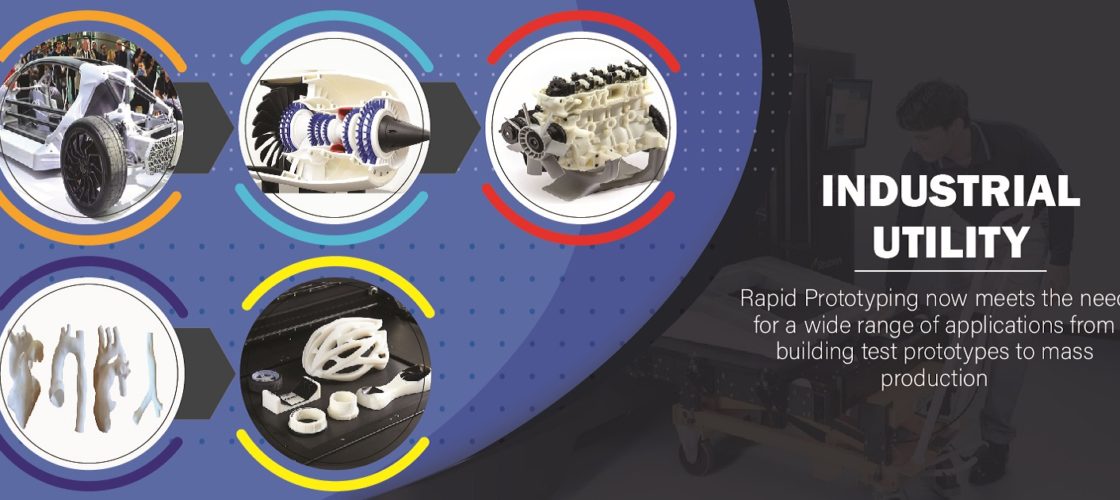Rapid Prototyping (RP) is a constantly evolving technology. RP models are becoming widely used in many industrial sectors and applications. Initially conceived for design approval and part verification, RP now meets the need for a wide range of applications from building test prototypes with material properties close to those of production parts to fabricating models for art, jewelry and medical applications.
Nearly every manufacturing industry has benefited from advancement in rapid prototyping technology. However, a few specific market segments have come to rely on rapid manufacturing as a regular part of their design and production process.
Manufacturing and Construction: The ability to design custom parts on an on-demand basis has been a great boon for engineers in all industries. Rapid prototyping can be used to build unique parts that fit perfectly and which can be ordered in small batches with quick delivery times.
Automobile: The advantages of rapid prototyping have clearly seen on the automotive industry. In addition to testing new designs, many engineers use 3D printing to create highly detailed parts that would not be viable with traditional manufacturing methods.
Healthcare: The healthcare industry continues to dominate the industrial rapid prototyping market. 3D printing services are commonly used to create surgical models, medical devices, and custom implants.
Aerospace and Defense: The aerospace and defense industries have greatly benefited from the unique properties of 3D printing and other on-demand manufacturing methods. In particular, the focus on durable yet flexible materials has resulted in the creation of innovative designs that are suited for a variety of extreme applications.
Consumer Goods and Electronics: From toys to tools to cases, the rapid prototyping industry has become one of the primary sources of consumer-ready products. This manufacturing method allows companies to achieve identical products across multiple print runs and has drastically reduced the cost of wholesale production.
Jewelry: The ability to rapidly produce a jewelry prototype or a pattern for casting is enabling jewelry designers to focus more of their time on the design phase—coming up with new and creative designs and tweaking them until they are just right. Moreover, rapid prototyping is opening up the possibilities for creating custom jewelry, as jewelry designers can quickly modify the size, form or details of a piece in CAD software and then rapidly iterate a physical model.
Apart from the above mentioned industries, everyday many new industries are finding ways to use RP to increase creativity and efficiency while reducing time and cost.
